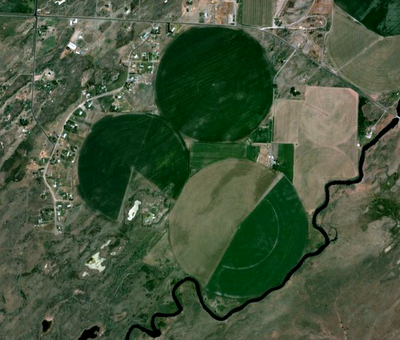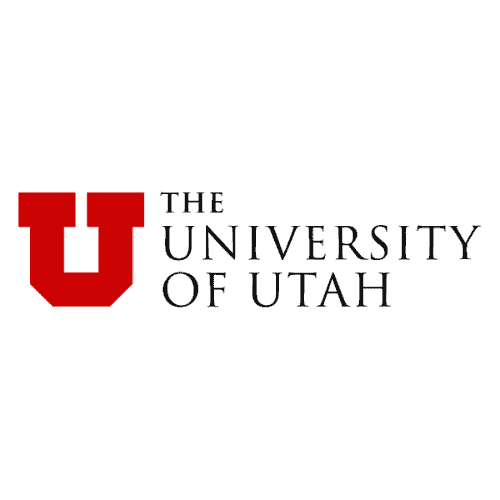by Chris Corbin
During my last 5 flights, I’ve heard somewhere in the cabin of the plane: “What are those green circles?” The answer is center pivots. Of course, since I work in water marketing, I’m interested in how center pivots impact water rights and water markets.
First of all, are center pivots more efficient? Turns out, it depends on how you look at it.
Incorporating irrigation efficiency projects, such as converting from flood irrigation to sprinkler irrigation, have long been touted as water savers. But do they save marketable water (i.e. water that can be transferred to another use or appropriated to additional acreage)? Although it is well documented that sprinkler irrigation represents a more efficient use of water, whether or not this practice saves marketable water depends on the state agency’s view of the water right transfer.
State Agency View #1: We will only transfer the volume associated with the crop’s consumptive use. The agency’s argument is that if you are irrigating 40 acres of alfalfa with flood irrigation and 40 acres of alfalfa with a center pivot your consumptive use of water under both scenarios is 40 acres of alfalfa.
Verdict: This agency view does not create marketable water by changing from flood irrigation to sprinkler.
State Agency View #2: We will transfer all of the volume associated with the diversion rate (flow rate at the point of diversion).
Verdict: This agency view creates the greatest amount of marketable water. The volume of marketable water generally equates to the difference between the volume of water historically diverted for flood irrigation and the volume of water needed for the new irrigation system.
State Agency View #3: Somewhere between agency view #1 and #2.
Verdict: Depends on the project. Water marketing projects are site specific. The volume of water available to market will depend on the agency’s view of the water right and water conservation practice.
In summary, irrigation efficiency projects do not save marketable water when state agencies are only willing to transfer the volume of the water right consumptively used by the irrigated acreage. Irrigation efficiency does save marketable water when agencies view the diversion volume as the historic use of the water rights. And, when agencies view the water rights historic volume somewhere in between these two scenarios, it will depend on the project.
Chris Corbin is the founder of Lotic Water Marketing and a PERC Enviropreneur Institute alum. He blogs at Living in Actively Moving Water.



